Realme 3 Pro Review
Realme 3 Pro Review
A promising affordable smartphone with a big battery
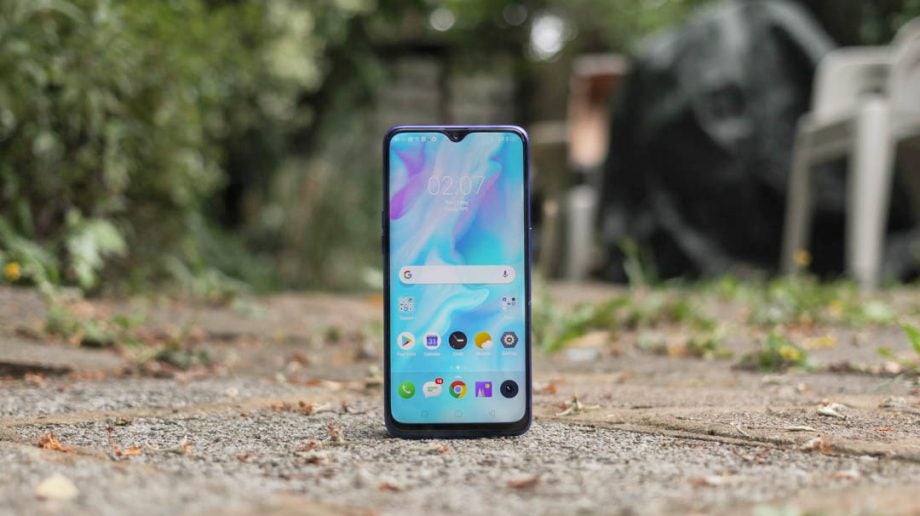
Verdict
The Realme 3 Pro may be an underdog, but it’s an all-rounder with a standout camera for the price, not to mention very fast charging too. Provided you can get past the plastic body, micro USB port and lack of NFC, the rest of the smartphone delivers nothing short of excellent value.
Pros
- Pre-fitted screen protector and case in box
- Excellent camera for the price
- Great battery and fast charging
Cons
- No NFC
- micro-USB port
- Plastic body
Key Specifications
- Review Price: £175
- 6.3-inch Full HD+ display
- Snapdragon 710 chipset
- 4GB/6GB RAM
- 64GB/128GB storage
- 4045mAh battery
- VOOC fast charging
What is the Realme 3 Pro?
The Realme 3 Pro is yet another midrange Android phone. You just have to glance at its specs to see, it’s cut from the same cloth as the Redmi Note 7 and the Huawei P Smart 2019. In other words, it features a good looking edge-to-edge Full HD+ screen with a water droplet notch on the front. Around the back, there’s a dual-camera and a fingerprint scanner, and inside is midrange power.
It’s hard to say what differentiates the Realme 3 Pro from the competition at first. The Redmi Note 7 has that megapixel-tastic 48MP camera, for example as well as a USB-C port. Meanwhile, Huawei’s P Smart 2019 packs a premium Huawei UI and an elegant, compact chassis. Motorola’s G7 Power is another option that crams in a huge 5,000mAh battery.
On paper, it looks like Realme’s Pro 3 is more of a jack of all trades than a master of anything in particular – but how do we feel about it after a week with the phone?
Realme 3 Pro – Design
When it comes to the Realme 3 Pro’s size, think more Pixel 3 XL than Pixel 3. It’s big with its 6.3-inch screen, but unlike some flagships, the Pro 3 isn’t super slender, clocking in at a noticeable 8.3-mm. The front is Gorilla Glass 5 – very nice – while the back is made from plastic, as is the frame.
While plastic isn’t as premium as glass or metal, the back is ergonomically curved and decorated with a striated speed wave pattern, apparently inspired by Le Mans track. With a total of 82 lines, and available in three colours; Carbon Grey, Lightning Purple and Nitro Blue, it looks attention-grabbing and catches light boldly. The inclusion of a very prominent Realme logo on the bottom left is also worth noting – though I didn’t love it.
Related: Best cheap phones
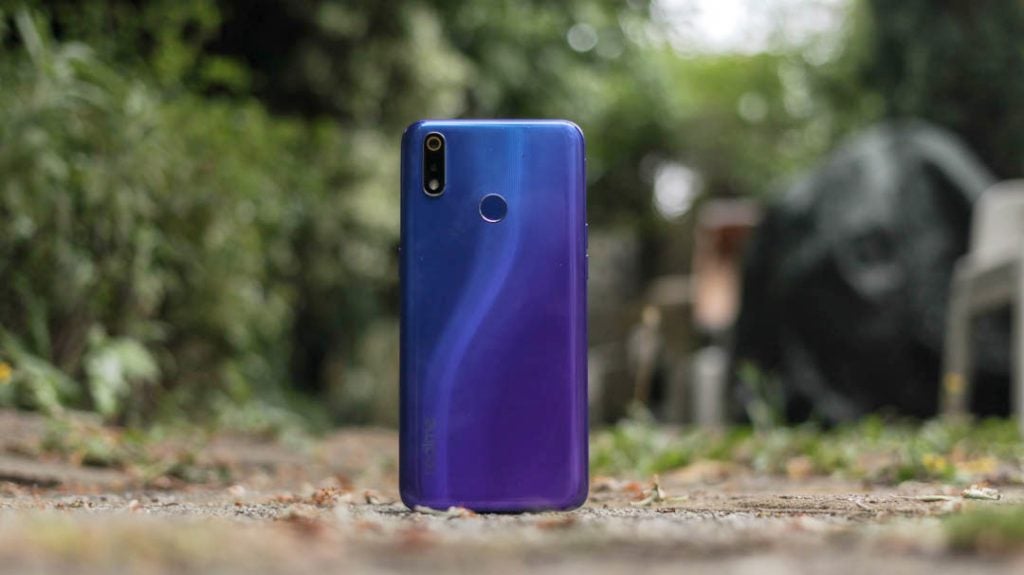
In addition, you can protect the Realme 3 Pro without spending a penny, thanks to the fact it ships with a soft touch case in the box, and with its pre-fitted screen protector, whichever way you look at it, this phone’s well shielded. One thing it isn’t however is IP water or dust resistant, which is hardly surprising at the Realme 3 Pro’s price.
Neither the 3 Pro’s smooth plastic back or the more matte, bevelled plastic frame provides a great deal of grip, so careful not to drop it. Neither does it feel as premium as the Redmi Note 7, which features both a glass front and back, and a richer, polished finish on its frame.
Irrespective, the Realme 3 Pro does offer a healthy array of buttons and ports: a micro-USB connector and 3.5mm headphone jack at the base, a power button on the right and volume buttons on the left. On the left is a dual-SIM slot which houses a microSD card slot too, while around the back is the fingerprint scanner and the dual rear camera.
So while it doesn’t feel or look as good as some other phones in its price range, the Realme 3 Pro’s generous screen size, striking colour options and well-protected front and back still manage to get the fundamentals right.
Realme 3 Pro – Screen
The 6.3-inch screen on the Realme 3 Pro is just a little smaller than those found on the Huawei P30 Pro and the iPhone XS Max, which clock in at around 6.5-inches. Sporting a Full HD+ resolution of 1080 x 2340, it’s as sharp as it needs to be. Competing directly with the likes of both, it even betters the pricier iPhone XR from a pixels-per-inch point of view, with the XR delivering 326PPI verses the Realme 3 Pro’s 409PPI.
Subscribing to the 2018/19 trend of 19.5:9 aspect ratio screens, the Realme 3 Pro’s display is long, and like the OnePlus 7 and Moto G7 Plus, it has a water droplet notch at the top, where the front camera lies.
With its specs reading well, the key difference between the Realme 3 Pro’s screen and that of flagships comes down to the tech behind them. Rather than opting for an AMOLED display, Realme went with LCD – which is exactly what I’d expect from a sub-£300 smartphone. This means less depth to blacks and richness to colours, and in turn, lower contrast, flatter looking images.
Despite this, everything else about the screen is very respectable for the price, with detail stacking up admirably against the competition and colour accuracy and integrity holding up head on and off-angle. Brightness is impressive, with outdoor visibility being a breeze, and only direct sunlight reducing it noticeably.
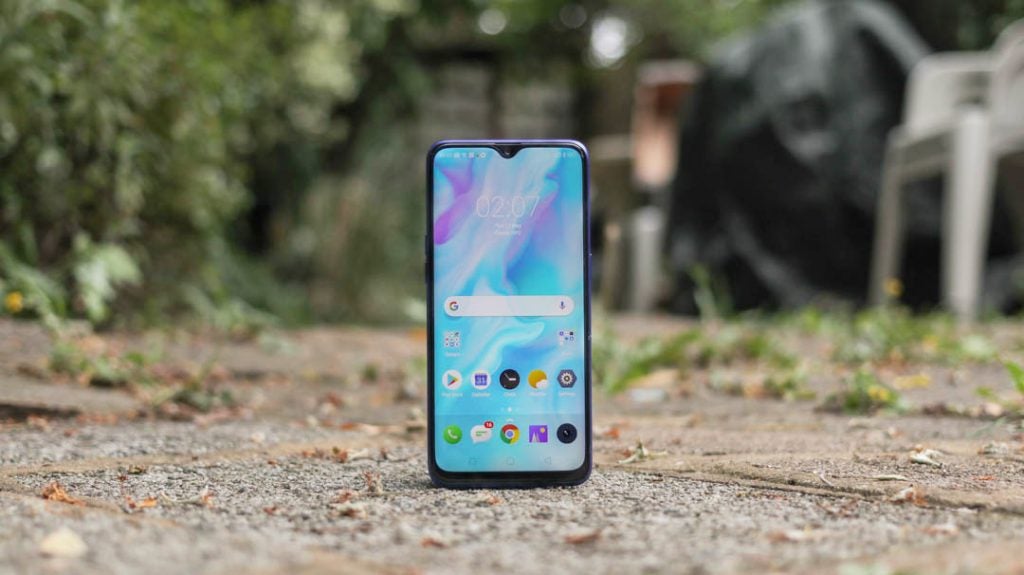
Software optimisations also go a long way to make the screen experience even better. For starters, within the settings are options to customise the colour temperature to suit your eyes. In addition, the phone’s ‘Night Shield’ feature is a blue light filter on steroids. Highly customisable, not only can you set the warmth of your screen, but you can also make it monochromatic, or invert its colours. This means, whichever way you look at it, the Realme 3 Pro’s screen is impressive both from a hardware and software point of view.
Realme 3 Pro – Performance
My experience with the Realme 3 Pro was nothing short of excellent from a performance point of view.
Available in two configurations, in its lowest capacity version – 4GB/64GB, it can be had for £175, and if you want more RAM and space, the 6GB/128GB version will set you back £219.
I reviewed the higher capacity model and would have no qualms recommending it to gamers and casual users alike. In day to day use, performance is silky smooth. The interface may not always be the prettiest, but it is well optimised and stable.
Gaming is also a joy on the Realme 3 Pro. Powered by a Qualcomm Snapdragon 710, the chipset is more than up to the task of playing 2D and 3D games alike, and when you factor in the 6GB RAM in my test unit, it’s unsurprising that everything from 4K video playback to split-screen multitasking is handled well too.
Benchmarks are impressive for a midrange smartphone, with Geekbench delivering a multi-core score of around 5000 and Antutu scoring over 15,000. These put it in the same league as the Redmi Note 7, its main competition, and a notch above the Honor 10 Lite and Huawei P Smart 2019. Even the Huawei P30 Lite, which costs around £100 more, falls behind in both a benchmarking and a real-world gameplay point of view.
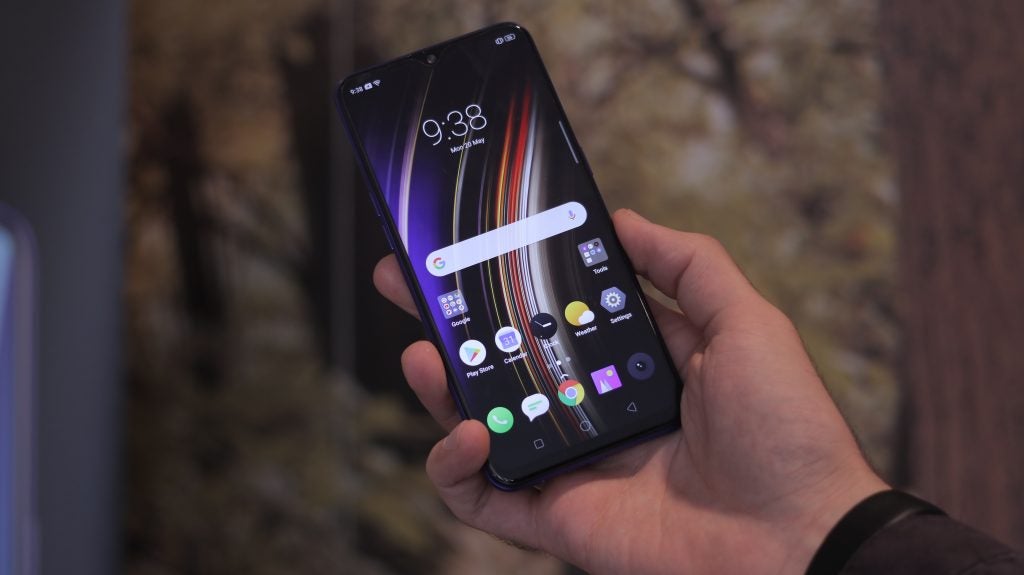
One downside of the phone when it comes to gaming is the fact it has a mono speaker, which can often be easily covered, completely muffling sound from the Realme 3 Pro. Despite this, the speaker is still loud and the quality of its audio is impressive, rounded and clear.
Call quality is also great, with clarity and the phone’s in-call speaker position working well for us. Our only issue with the performance of the Realme 3 Pro was when it came to using the phone as a mobile hotspot. Every hour or so, when wirelessly tethering an internet connection to our laptop, the internet connection stopped working, requiring me to unlock the phone, after which it would resume again – not a fatal flaw, but worth noting.
Realme 3 Pro – Software
Realme’s Color OS, a take on Oppo’s Magic UI, sits on top of Android 9, the latest widely available version of Google’s mobile OS. This means app support for the Realme 3 Pro is excellent, as too are the prospects of security updates – provided US sanctions don’t put the kibosh on this Chinese company getting access to Google services in the future too.
Interaction is instantly familiar to anyone who’s used an Android phone before, especially phones running Huawei’s EMUI or OnePlus’ Oxygen OS. A swipe down from any homescreen reveals a universal search bar, homescreens can be populated by apps, shortcuts and widgets, and there’s a handy screen to the right with additional shortcuts to utilities.
The apps tray is optional, as too are the three navigation buttons that usually fill the bottom portion of the display – which can be turned off in favour of iPhone Xs and OnePlus 7 Pro style gesture interaction.
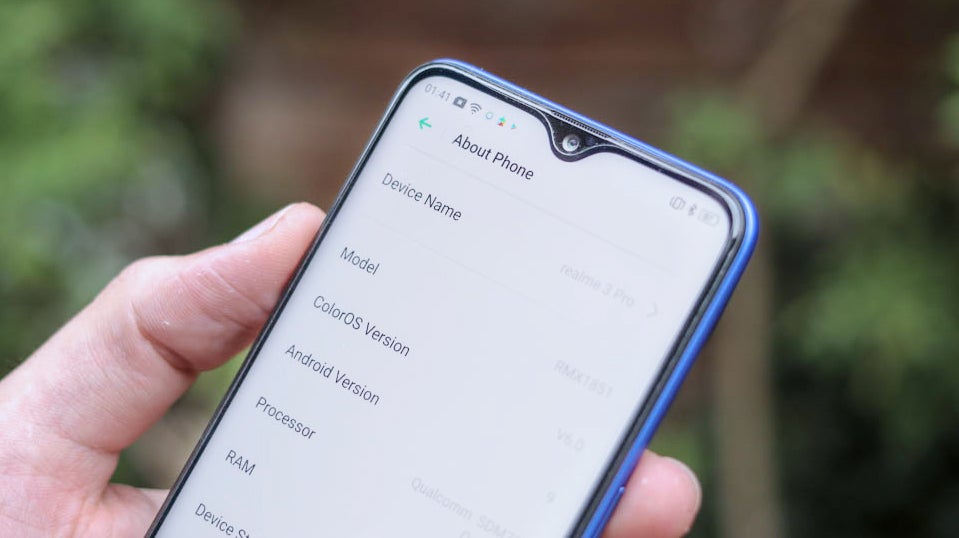
What makes the experience a bit busy is Color OS’ look and feel, which has a bit more of a gradient-heavy finish than stock Android. I can’t fault the stability and optimisation though, and within the settings, there are also a lot of customisation options.
These range from the screen and UI personalisations mentioned, through to predefined times for the phone to be put into silent mode or power off and on. A handy feature I used all the time was a three finger swipe up to activate split-screen multitasking, and you can also swipe down with three fingers to grab a screenshot.
All in all, Color OS may not be the best UI around, but there’s nothing markedly wrong with it from a utility point of view, and it also features some really well thought out flourishes.
Realme 3 Pro – Camera
With its 16-megapixel, f/1.7 aperture primary camera, combined with a 5-megapixel, f/2.4 aperture depth sensor, Realme claims its 3 Pro can give the flagships a run for their money across photos and video.
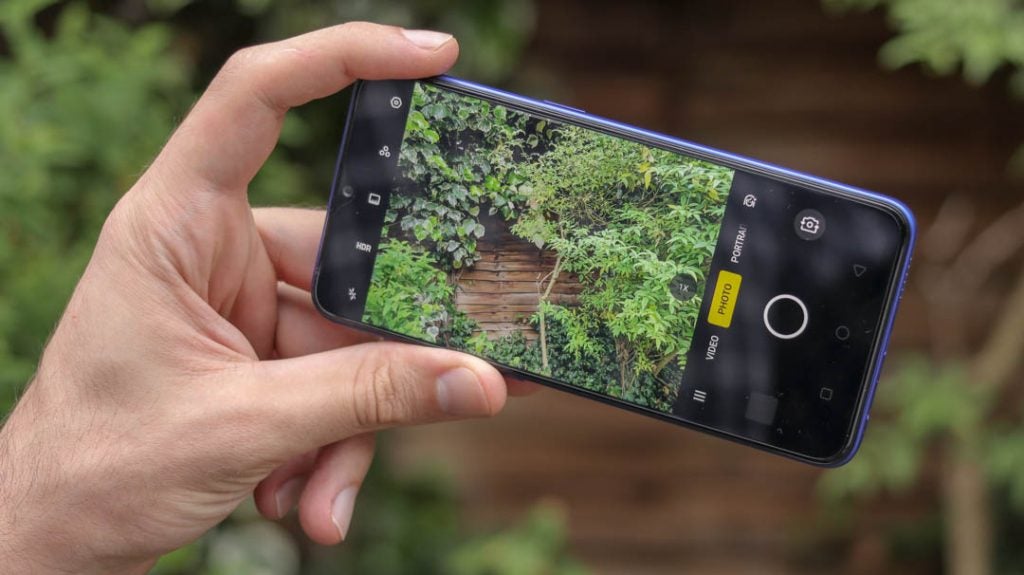
By bracketing images in a similar way to the Pixel 3, it can grab a broad tonal range, which should boost dark spots, soften highlights and create more dynamic night shots too.
Dive into expert mode and you can fire up a slightly bonkers sounding 64MP Ultra HD feature, similar to the super-resolution found on Asus smartphones like the Zenfone AR, which artificially creates detail. The main benefit I found, was that shots taken using it could be pinched into a bit more than default 16MP snaps. That said, when exported to a computer, there wasn’t much noticeable difference between photos shot at both resolutions.
The feature feels a bit unnecessary as a headline grabber, especially given how good the core camera experience is.
Pictures taken in automatic mode look great, packing stacks of detail, and unlike shots from some smartphones, contrast doesn’t feel overwhelming. Images showcase pleasing amounts of tonal range and nuance in lights and darks.
This rings true in low light too, with shots taken when the lights go down balancing noise reduction and detail very well. It categorically outperforms its competition here, delivering more consistent results than the Redmi Note 7 and P Smart 2019.
Thanks to the fact the Realme 3 Pro supports auto HDR (high dynamic range), even in challenging scenes, pictures taken pack a respectable tonal range. With its f/1.7 primary camera, macro shots are strong too, with healthy amounts of detail and pleasing background blur.

How does the Realme Pro 3 compare against the Redmi Note 7 and P Smart 2019?



It’s also worth noting that the Realme 3 Pro is one of the only phones in its price range that can shoot 4K video, and while the electric image stabilisation isn’t a patch on that of the P30 Pro, for example, it’s still impressive.
As for the phone’s 960fps slow-mo video, sadly, it’s almost all hype. Slow-motion footage plays back at a very slow framerate, making it feel like a 60fps piece of content that’s just been slowed down. Meanwhile, the 120fps slo-mo looks great, so forget the big numbers and stick with that.
Finally, onto the selfie camera, and the Realme 3 Pro’s 25MP, f/2 shooter is cracking. Like the rear camera, it has auto HDR, and while it might not pack the widest angle around, its balance of flattery and detail, in the highlights and darker areas of the scene are very impressive, beating out competition from significantly pricier handsets like the P30 Lite.
Realme 3 Pro – Battery Life
With its 4045mAh battery, the Realme 3 Pro is one of the best specced midrangers around from a numbers point of view. It even beats out some flagships like the Samsung Galaxy S10 and iPhone X, for example.
Half an hour of intensive gaming dropped the battery by 8%. Meanwhile, an hour of video playback depleted it by about 10%, and an hour of screen off audio playback took it down another 3%.
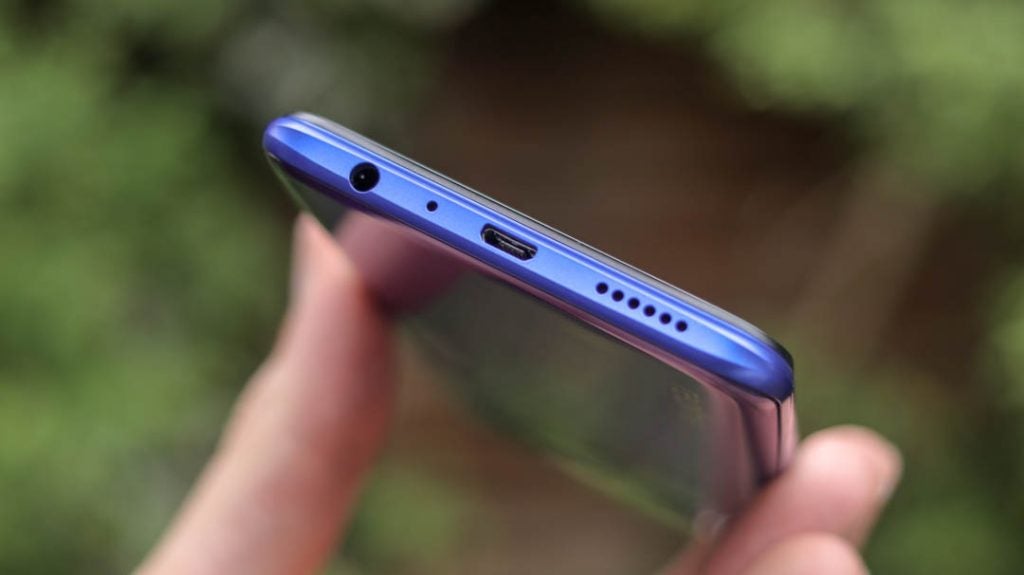
With a micro USB port at the base, the Realme 3 Pro doesn’t quite serve up the latest connectivity options, and there’s no NFC either. Having said that, the phone does support Oppo’s proprietary charging tech, called VOOC. Realme’s claim of 50% in 30 minutes worked out to roughly what I got in the real world, and with a full charge taking an hour and fifteen minutes, the package is very impressive for the price.
Should I buy the Realme 3 Pro?
If you’re looking for an excellent phone that costs less than £220, you should definitely consider the Realme 3 Pro. While the Redmi Note 7 and Nokia 7.1 both have a more premium in-hand finish and USB-C ports, Realme’s offering outperforms both when it comes to imaging and video. Its VOOC fast charging combines with a great battery, and power and storage options are excellent too, with performance beating competition from the likes of Huawei and Honor.
The fact the phone features a micro-USB port and a plastic back mean it will never feel like a flagship in the hand, or when you’re plugging it in to charge. Having said that, if you’re okay with those sacrifices and NFC being absent, gamers and picture-takers will love the Realme 3 Pro, as too will on-the-go movie watchers thanks to its great display.
Verdict
The Realme 3 Pro may be an underdog, but it’s an all-rounder with a standout camera for the price, not to mention very fast charging too. Provided you can get past the plastic body, micro USB port and lack of NFC, the rest of the smartphone delivers nothing short of excellent value.
How we test phones
We test every mobile phone we review thoroughly. We use industry standard tests to compare features properly and we use the phone as our main device over the review period. We’ll always tell you what we find and we never, ever, accept money to review a product.


